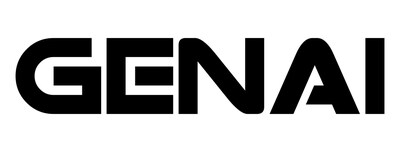
Rapid Rollout of Generative AI, Yet No Employment “Tsunami” on the Horizon Despite the rapid adoption of generative AI (GenAI) technologies like ChatGPT, experts predict that the impact on employment will not be as drastic as initially feared. While GenAI has the potential to automate certain tasks and displace low-skill workers, it is also creating new opportunities and enhancing productivity for businesses. Automation and Displacement GenAI’s ability to process and generate text, images, and even code has raised concerns about its potential to replace human writers, designers, and other creative professionals. However, studies have shown that while GenAI can perform repetitive tasks, it lacks the creativity, critical thinking, and problem-solving abilities of humans. In addition, most GenAI models are designed as assistive tools, augmenting human capabilities rather than replacing them. For example, AI writers can generate drafts and ideas, freeing up writers to focus on higher-level tasks like storytelling and editing. Enhancement and Opportunity On the positive side, GenAI is also creating new employment opportunities. Companies need specialists to develop, train, and maintain GenAI systems. Furthermore, GenAI can enhance productivity by automating routine tasks, allowing employees to focus on more complex and valuable work. For instance, in the legal field, GenAI can automate document review and discovery, freeing up lawyers to focus on strategy and client counseling. In the healthcare industry, GenAI can assist with medical research, drug discovery, and patient diagnosis, improving patient outcomes and reducing costs. Skill Adaptation and Upskilling While GenAI is not expected to cause mass unemployment, it does necessitate skill adaptation and upskilling. Workers in fields impacted by GenAI should acquire complementary skills in areas such as data analysis, critical thinking, and creative problem-solving. Governments and educational institutions play a vital role in supporting workers through this transition. They can provide training programs, scholarships, and career counseling to help individuals adapt to the changing job market. Conclusion While the rapid rollout of GenAI has raised concerns, there is no evidence to suggest a widespread “tsunami” on employment. GenAI has both the potential to automate certain tasks and displace workers in some industries, but it also creates new opportunities and enhances productivity. By adapting our skills and embracing the transformative power of GenAI, we can harness its benefits while mitigating its potential drawbacks.Key Findings from Nash Squared Digital Leadership Report Pulse SurveyKey Findings from Nash Squared Digital Leadership Report Pulse Survey * Overhyped predictions: Predictions of AI’s imminent impact on employment are exaggerated. * Chief AI Officers: The role of Chief AI Officers is becoming more prevalent. * GenAI policy adoption: Organizations with a GenAI policy have doubled in just six months. * Unproven business case: Lack of a clear business case is hindering GenAI adoption. * Continued investment in technology: Despite the challenges, investments in technology remain strong. Survey Highlights: * 71% of technology leaders have deployed GenAI to some extent. * 99% report that GenAI is not yet replacing jobs. * 51% use GenAI as a productivity tool to enhance existing jobs. Expert Insights: CEO of Nash Squared, Bev White, stated: * AI holds great promise, but most technology leaders are still navigating its implementation. * AI’s impact on employment will be gradual rather than revolutionary. * As organizations evolve, AI will become seamlessly integrated into their operations. Additional Information: * Full press release available at the provided link. * Nash Squared is a leading provider of technology and talent solutions. * The survey is part of Nash Squared’s annual technology leadership survey, which has tracked industry trends for over 25 years.
Rapid Rollout of Generative AI, but No Signs of a ‘Tsunami’ on Employment Despite the rapid advancement and widespread adoption of generative artificial intelligence (GenAI) tools like ChatGPT and DALL-E 2, experts maintain that the technology is unlikely to lead to a widespread displacement of human jobs in the near future. A recent study by the World Economic Forum found that while GenAI could automate up to 15% of job tasks by 2025, it is also expected to create new job opportunities in areas such as data analysis, software development, and creative content generation. Industries that rely heavily on repetitive and data-intensive tasks, such as customer service, data entry, and transcription, are seen as being most vulnerable to automation. However, experts emphasize that GenAI is not a replacement for human intelligence and creativity, and that it will likely complement rather than replace many job functions. “GenAI has the potential to enhance human capabilities and make us more productive,” said Dr. Helen Toner, an artificial intelligence researcher at the University of Oxford. “It can automate mundane and error-prone tasks, freeing up human workers to focus on more complex and creative endeavors.” Dr. Toner also noted that the adoption of GenAI could lead to the creation of new industries and job roles that support the development, deployment, and maintenance of these technologies. “The key to mitigating the potential negative impacts of GenAI on employment is to invest in education and training programs that prepare workers for the new skills and jobs that will be required in the future,” said Dr. Toner. Overall, while GenAI is expected to have a significant impact on the workforce, experts do not anticipate a widespread “tsunami” of job losses. Rather, they believe that the technology will transform the way we work, create new opportunities, and enhance our productivity.
Posted inNews